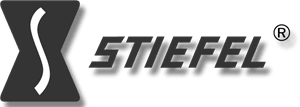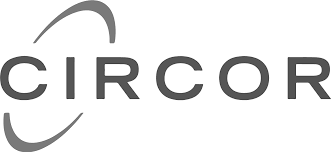
Understanding Your Business Cash Flow
Cash flow is the lifeblood of any business. It represents the net amount of cash and cash equivalents flowing in and out, reflecting the company’s liquidity and efficiency. Monitoring cash flow allows businesses to maintain stability, fund growth, and avoid financial distress.
The Cash Flow Statement: Your Financial Roadmap
The cash flow statement is a vital financial document that breaks down the movement of cash over a period. It helps business owners and stakeholders understand where cash is coming from and where it is going, highlighting strengths and vulnerabilities in day-to-day operations.
Breaking Down Cash Flow Components
To effectively maximize cash flow, it’s essential to grasp its three main segments. Each offers insights into different business activities.
1. Operating Activities: The Cash Engine of Your Business
This segment tracks cash generated from core operations like sales revenue and expenses such as supplier payments and wages.
- Positive cash flow here signals solid sales and cost control.
- Negative cash flow indicates operational challenges needing immediate attention.
2. Investing Activities: Managing Assets for Growth
Cash flow in investing activities relates to purchase or sale of assets like equipment, property, or securities.
- Positive cash flow may come from asset sales or returns on investments.
- Negative cash flow often shows investments for future growth but needs balance to avoid liquidity issues.
3. Financing Activities: Fueling Business Capital
This section tracks cash movement involving debt, equity, and dividends.
- Positive cash inflows can arise from loans or capital raised.
- Outflows here may reflect debt repayments or dividends, impacting cash reserves.
Proven Strategies to Boost Cash Flow

A. Optimize Operational Cash Flow
- Cut Non-Essential Expenses: Conduct regular expense audits. Negotiate supplier contracts and prioritize cost-saving technologies.
- Enhance Receivables Management: Accelerate collections by offering early payment incentives and automating invoicing and reminders.
- Manage Payment Terms: Extend payables where possible without compromising supplier relationships.
- Improve Inventory Efficiency: Avoid overstocking and adopt just-in-time inventory to free up cash.
B. Smart Investing for Cash Flow Stability
- Regular Asset Reviews: Sell underused assets to generate cash and reinvest in high ROI initiatives.
- Prioritize Capital Expenditures: Focus spending on projects that promise clear returns. Consider leasing over buying when appropriate.
- Strategic Divestment: Free capital by selling non-core assets, reinvesting in core business activities.
C. Creative & Flexible Financing Solutions
- Refinance Debt: Lower interest costs by negotiating better loan terms.
- Leverage Equity: Inject capital from investors to strengthen cash flow without immediate payback.
- Supplier Financing: Work with suppliers to establish favorable payment schedules or financing options.
Leveraging Technology in Cash Flow Management
1. Automation to Increase Efficiency
- Utilize accounting software to automate invoicing, payments, and cash flow reporting.
- Employ robotic process automation to handle repetitive tasks, reducing errors and saving time.
2. Data-Driven Decision Making
- Analyze historic cash flow trends with business intelligence tools to forecast needs.
- Use predictive analytics to anticipate periods of cash surplus or shortage.
3. Digital Payment Methods to Accelerate Cash Inflows
- Offer diverse payment channels such as mobile wallets and real-time payment processing.
- Speed up cash receipt times to improve liquidity.
Addressing Common Cash Flow Challenges
Typical Cash Flow Issues
- Seasonal Sales Variability: Off-peak periods can cause cash shortages.
- Rapid Expansion Impact: Scaling quickly may strain capital due to higher operational expenses.
- Delayed Payments: Late receivables disrupt cash cycles.
Effective Mitigation Tactics
- Regular Cash Flow Forecasting: Combine past data with market insights to anticipate cash needs.
- Contingency Funds: Maintain reserves to cover shortfalls or emergencies.
- Good Financial Relationships: Keep strong ties with lenders and investors for quick access to funds.
Industry-Specific Examples of Cash Flow Strategies
Retail Businesses
- Implement loyalty programs to encourage faster payments and repeat sales.
- Use inventory management software to avoid overstocking.
Manufacturing Firms
- Optimize supply chains to extend payables and reduce inventory holding costs.
- Invest in equipment leasing to preserve cash.
Service Providers
- Adopt subscription billing models to create predictable cash inflows.
- Automate invoicing and payment processing to reduce delays.
A Practical Cash Flow Action Plan
| Step | Action | Example | Timeline |
|---|---|---|---|
| 1 | Review current cash flow statement | Analyze last 3 months’ cash activities | Week 1 |
| 2 | Identify cash drains and opportunities | Spot high expenses or payment delays | Week 2 |
| 3 | Implement operational changes | Negotiate payables, automate invoicing | Weeks 3-4 |
| 4 | Set up cash flow forecasting | Use historical data to project next quarter cash flows | Week 5 |
| 5 | Review & adjust regularly | Monthly cash flow review with finance team | Ongoing |
Summary Checklist: Maximize Your Business Cash Flow
- Understand and monitor your cash flow statement monthly.
- Streamline operations: reduce costs and improve receivables.
- Invest smartly and manage assets for liquidity.
- Use flexible financing to support cash flow needs.
- Leverage technology for automation and forecasting.
- Plan ahead to mitigate seasonal or growth-related cash flow gaps.
- Foster a company-wide cash-conscious culture.
To accelerate your cash flow improvement journey, explore the Financial Health & Profit Boost Strategy Pack. This comprehensive toolkit offers templates and strategies tailored to optimizing your business finances and cash management.






























